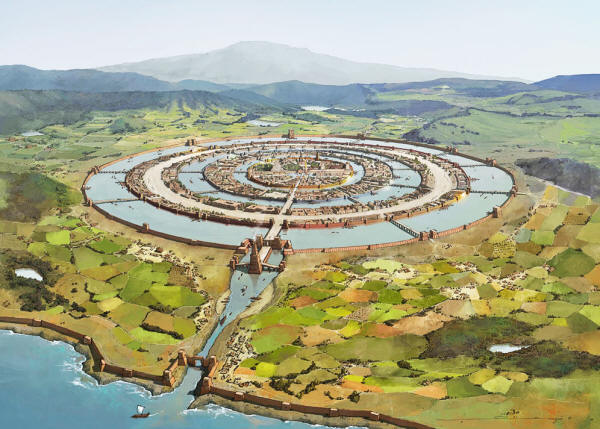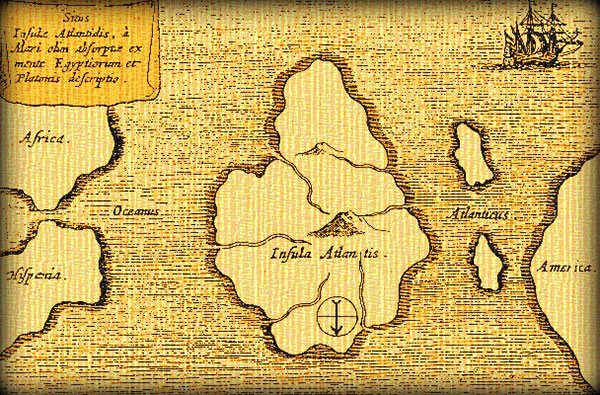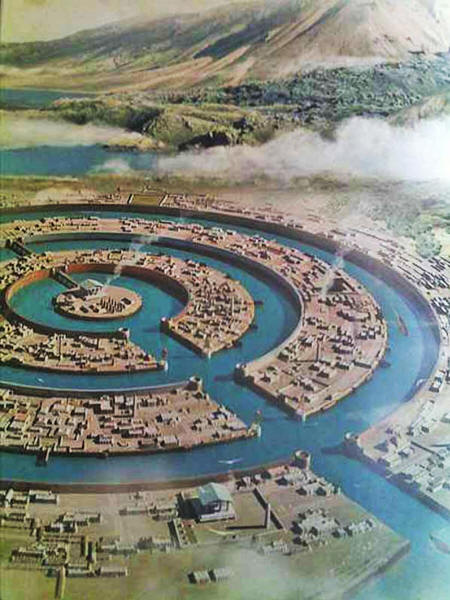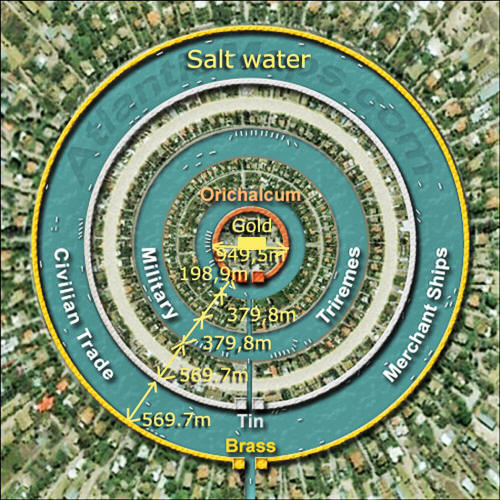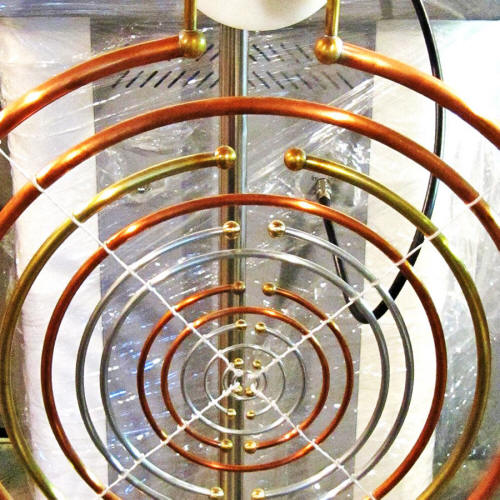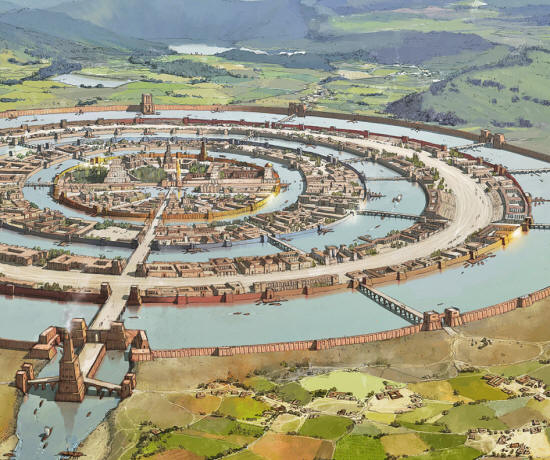|
November 24, 2017
Thus, the succession of
materials used (non-ferrous metals) and the combination with salt
water brought up to the center of the city on very deep and wide
canals, combined with the existence of two freshwater springs, one
hot and the other cold, gave the possibility of producing
electricity by simply increasing and cooling the ends of the circles
surrounding the city.
The salt water of the
Atlantic, (33 parts per thousand) combined with the tidal movement
could become another source of electricity. The closure of city-wide
circuits was accomplished by closing the bridges on the canals.
The metal plating of the circular dykes was, from the inside to the outside, Orichalcum natural alloy - probably gold and silver, tin and brass.
The core consisted of the
golden rectangular central temple.
During the construction of the circular dykes ,excavated stone was piled up from trenches and canals, but the most important is the use of the color code White-Black-Red.
Plato describes the "artistic" settlement of the stones at construction, using only those colors.
On the other hand, in Egypt it was discovered that a series of pyramids used strictly this color code by using white limestone boards and red and black granite boards respectively.
The look like a code of color on electrical cables I do not think it's a coincidence!
There are also strange
similarities to the temple complex of
Angkor Wat and Tenochtitlan but I
will not insist on this now.
To me this was
alien power and communication
technology...
|


